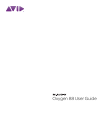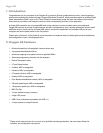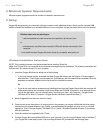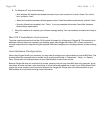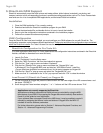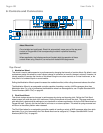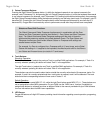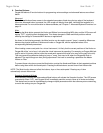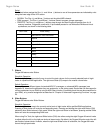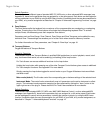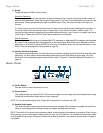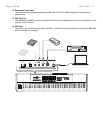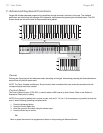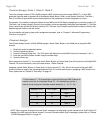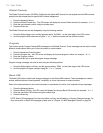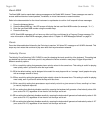
Oxygen Series User Guide 6
3. Octave/Transpose Buttons:
Pressing the Right Octave/Transpose button (>) shifts the keyboard upwards in one octave increments (for
example, note F3 becomes F4), and pressing the Left Octave/Transpose button (<) shifts the keyboard downwards
in one octave increments (for example, note F3 becomes F2).Pressing both buttons simultaneously, then pressing
the Right Octave/Transpose button shifts the keyboard upward by one half-step (semi-tone). For example, note F3
becomes F#3. Pressing the Left Octave/Transpose button shifts the keyboard downward by one half-step (F3
becomes E3). Oxygen 88 will automatically return to performance mode after the pitch has been transposed.
4. Track Buttons:
DirectLink Operation:
The left Track button (<) selects the previous Track in qualified DAW applications. For example, if Track 2 is
currently selected, pressing this button will select Track 1 in the application.
The right Track button (>) selects the next Track in qualified DAW applications. For example, if Track 2 is
currently selected, pressing this button will select Track 3 in the application.
These buttons can also be used to select tracks outside the currently active bank of 8 sequencer tracks. For
example, if track 8 is currently selected and the > track button is pressed, track 9 will be selected. The track
sliders and their corresponding buttons will now control Tracks 9 - 16.
Default Operation:
The left Track button sends MIDI CC 110, while the right Track button sends MIDI CC 111. These buttons are
not re-assignable to other MIDI parameters. On your DAW, use the "MIDI Learn" function (if available) to
assign these buttons to software functions as desired. Refer to the manual provided with your DAW software
for more information about its MIDI Learn capabilities.
5. LED Screen:
Oxygen 88 features a 3-digit LED screen providing visual information regarding current operation, programing,
and status.
Global and Zone Shift Functions:
The Global Octave and Global Transpose functions work in combination with the Zone
Octave and Zone Transpose functions (see Section 9 - Zone Octave and Zone Transpose
keys). The Global Octave and Global Transpose settings shift the pitch of the entire
keyboard while preserving relative pitch offsets between Zones. The Zone Octave and
Transpose functions are useful when different Octave or Transpose shift settings are
needed across multiple Zones.
For example, if a Zone is configured for a Transpose shift of +5 semi-tones, and a Global
Octave shift setting of +1 is applied to the keyboard, the effective pitch shift for that Zone is
one Octave and five semi-tones (or a total of 17 semi-tones).



